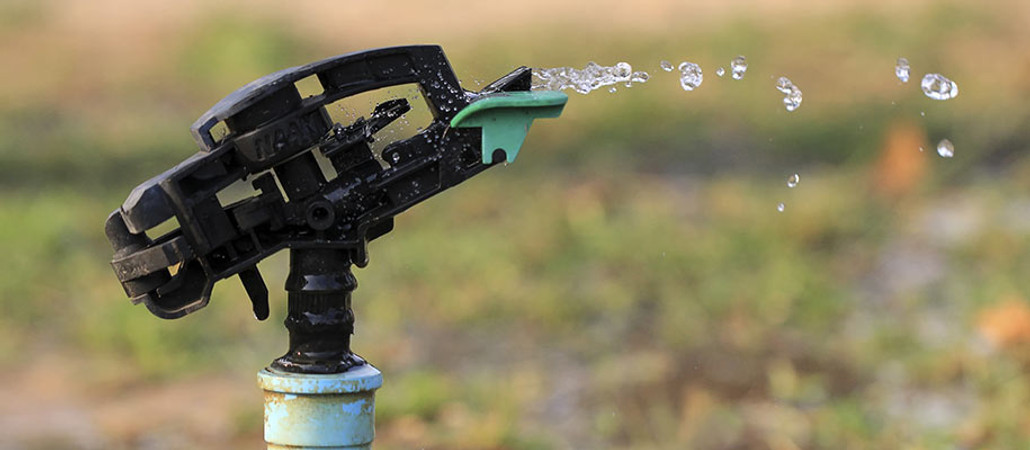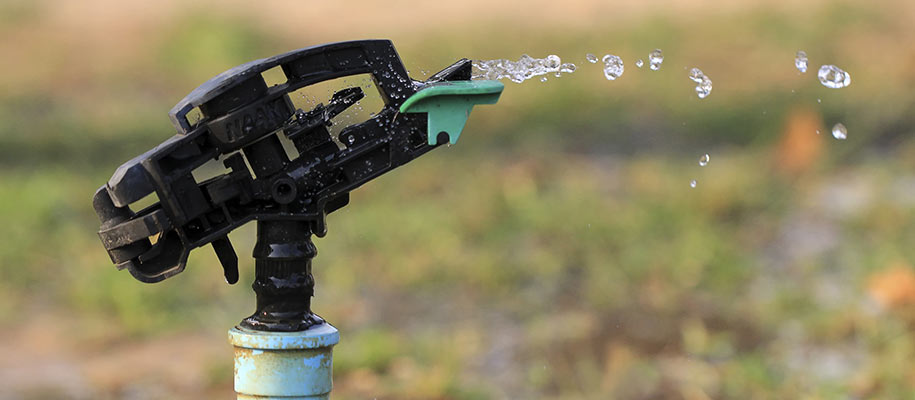
Drought Season Garden Tips
Posted by Grange Co-op on 31st Aug 2014

While it’s always wise to be water-conscious in the garden, during periods of drought it’s especially important to conserve H2O. And while less water may seem like a kiss of death to your garden, with a few simple water conservation strategies, your garden may actually be healthier and more productive than usual.
Essential to water conservation is watering wisely. Timing is everything, and ideally you will want to water early in the morning to avoid evaporation. Evening watering leaves ‘free standing moisture’ near the plants which can promote diseases, and much of the water may have drained out of the root zone before the plants wake up and attempt to draw up vital moisture. You also need to water deeply, and then refrain from watering again until the top 1” of soil is dry.
Here are some more easy and important tips for maintaining a healthy and productive garden during times of drought.
Create a Garden’s Foundation by Preparing the Soil
Soil preparation is key to long-term garden success. Soil preparation deals with improving the nutrient quality of the soil, as well as the texture. In improving the nutrient quality of the soil, botanists have learned that beneficial soil organisms are vital in delivering soil nutrients to plants. The beneficial micro-organisms include soil fungi which help roots to seek out and absorb water and nutrients from the soil.
There’s a symbiotic association in which the mycelium – the vegetative part of a fungus – colonizes a plant’s root hairs, which results in enhanced water absorption. The association only applies with flowering and fruit-bearing plants, or angiosperms. This symbiotic association is beneficial to both the fungus in the soil and the root hairs as the size of the root system is expanded. The result is an increase in the mass of the root system, which enables the plant to take up a great deal more water in the soil to help plants survive in drought periods.
Grange Co-op offers an excellent transplant product called Soil Moist Transplant Mycorrhiza which is coated on roots when transplanting. The product inoculates the soil and assists in the symbiotic association.
Soil preparation also has to do with incorporating organic matter to improve the soil’s tilth and texture. Tilth refers to the soil’s ability to support plant and root growth, and texture refers to the soil’s particle size. By enhancing the soil’s tilth and texture, you are making better air spaces and more particle surface that can hold onto water as the upper layers of soil dry out. The end result is plants with a much bigger root system to survive drought.
Products perfect for incorporating organic matter into the soil include Rogue Natural and Organic Planting Compost, Green Planet Naturals Compost, Gardner & Bloome Harvest Supreme (before planting vegetable and flower gardens), Gardner & Bloome Soil Building Compost, as well as animal manures used in fall to “mellow” before spring planting.
Mulching is Key to Saving Water
Adding mulch, which can be anything from store-bought products to wood chips, leaves, grass clippings and pine needles, on top of your garden bed prevents evaporation of water from the soil. Plants are healthier when they don’t dry excessively between irrigations. Mulching also reduces weather-induced stress to garden plants by maintaining a more even soil temperature; cooler in the summer and warmer in the winter.
Mulching prevents germination of weed seeds (if your mulch is free of weeds and is laid down deeply enough). It will also impede some existing weeds – but it’s best to lay mulching over an area free of weeds to start with.
Other benefits of mulching include:
- Helping to control soil erosion and stops soil diseases from splashing onto plants
- Helping to maintain better soil structure and aeration by preventing compaction
- Improving soil structure as it decays, adds nutrients to the soil and actually becomes part of the topsoil
- Minimizing crusting of heavy soils, which aids water absorption and aeration, resulting in less need for cultivation in the garden
- Enhancing the appearance of the garden and landscape: a consistent color and form around garden plants provides a unifying element to the yard and sets off individual plants
The use of mulches results in garden plants with more robust root systems because additional roots will grow in the mulch around the plants. Gardner & Bloome’s Soil Building Compost is a great product for use in the soil and for using as a top mulch. Rogue Natural and Organic Planting Compost can also be used as a mulch.
Close Crop Gardening (Square Foot Gardening)
Close crop gardening, also called square foot gardening, is just like it sounds: grow your produce close together. This technique was created by Native Americans who planted corn, beans and squash alongside each other. The benefits of close crop gardening include using less water, plus fewer weeds as plant leaves shade the soil and smother weeds.
For close crop gardening, instead of planting your garden in traditional rows, keep plantings closer together in diamond or square patterns. A good rule of thumb is to plant close enough together that the leaves will touch once mature. You will find that you also gain valuable garden space this way – perfect for people with limited areas. If you don’t have a garden bed, close crop gardening can also be accomplished in containers or pots.
Made in the Shade
In periods of high heat, shading your garden from direct sunlight can minimize water loss. This can be accomplished by adding a shade cloth, which come in a variety of densities. Grange Co-op offers a shade cloth blocking 60% of light, but shade cloths blocking as little as 20% will also work. A free option is a white bedsheet placed high enough above the garden to still allow some sunlight to come through.
Avoid Overwatering
More garden plants die of overwatering than anything else. When we see wilting plants, our first thought is that they need water. However, the symptoms of drought and overwatering are often the same: wilting. When we overwater, we can kill microscopic root hairs which are responsible for a plant’s growth and essentially its little “mouths” for absorbing water.
Tomato plants, the most popular garden plant, are often overwatered. As they get bigger, they will naturally wilt during midday as the fruit is taking the moisture. This wilting is normal in the heat of the day, but it’s often mistaken for underwatering. With sufficient mulching, and if it is planted well (for starts, plant a couple of inches below what you would normally plant), you can water once every five days. Make sure to water thoroughly when you do water. Results include conservation of water and better tasting fruit.
Locating Plants with Similar Watering Needs Together
Make more efficient use of the water you do use by strategic plant placement in your garden. A good plan is to create three zones. Locate heavy “drinkers” all together, then those that survive with 7-10 days between watering together, and finally all of the real dry-loving plants together. This makes it easier and more time-efficient for you to efficiently water your zones.
For more gardening tips, you can also speak with a Grange Co-op garden center associate for expert advice on your exact needs.
